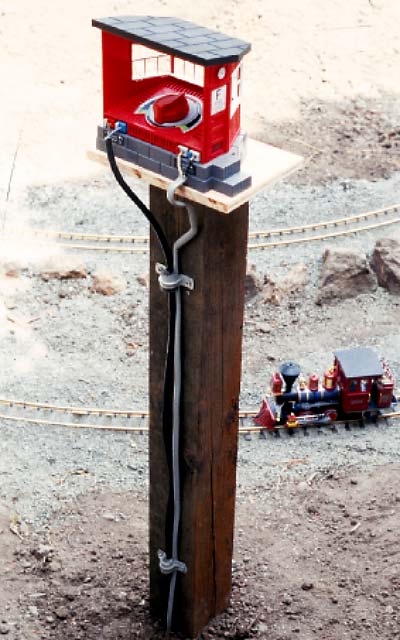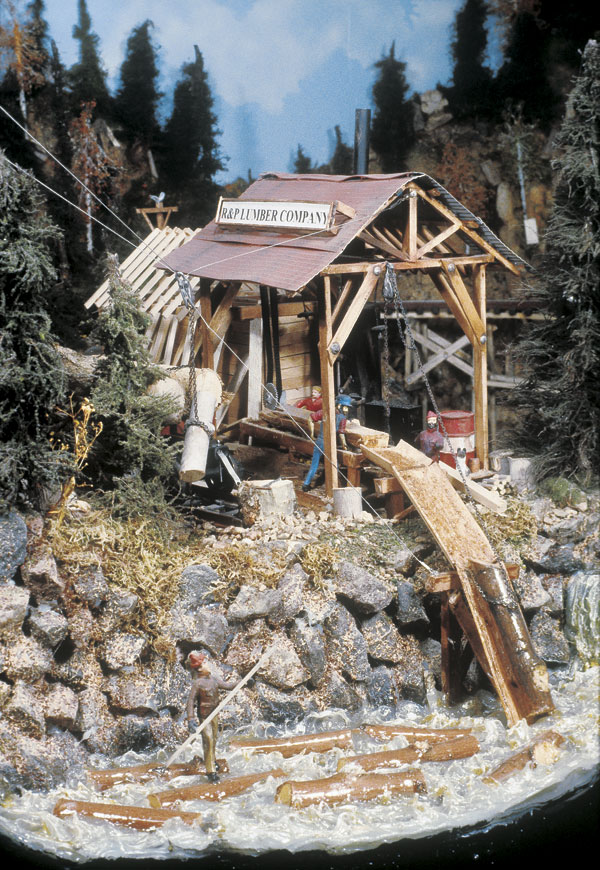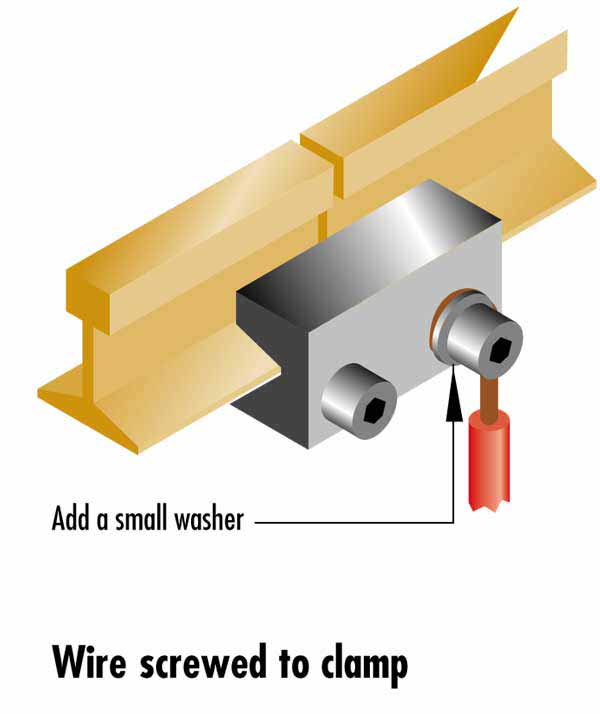
This wooden column supports the control center. Leads have been neatly attached to it. Marc Horovitz Small trains give the illusion of traveling long distances in a garden railway. Marc Horovitz With our trackwork complete, we could now turn our thoughts toward wiring the Colorado & Pacific. Since ours was a small railroad, wiring would […]
Read More…

In this overview of the entire FCM de STL, you can see how much action and detail is contained in a small space. Knobs on the fascia boards control turnouts, while on/off switches control power to sidings. Bill Zuback The open-air market in the town of Santa Lucia bustles with life. Bill Zuback An FCM […]
Read More…

A lumberjack rolls wet timber to the ramp at the R&P Lumber Company sawmill. The “water” is made of clear resin. Marc Horovitz A bird’s-eye view of the little town of Aurora, nestled high in the Colorado Mountains. Marc Horovitz Engine No. 1 crosses the high bridge at Indian Leap, with a load of empties, […]
Read More…

This RhB Ge 6/6 II locomotive is one of a batch that was built by the author and a group of other modelers. It takes its power from the overhead wires. Martin v. Meyenburg The functioning overhead catenary system provides power for all locomotives that run on the line. The entire system was scratchbuilt. Martin […]
Read More…

At the turn of the century even the smallest trains left little room for indoor model railroading Back before the “dawn of time,” say around 1860, the model train hobby was in its infancy, as was the full-size railroad industry. In fact, for decades, the development of model railways closely paralleled that of full-size railways. […]
Read More…

Marc Horovitz Marc Horovitz Marc Horovitz There are several ways of connecting a lead wire to the rail. Perhaps the most positive is soldering it. The wire can also be connected mechanically. Screw-on connectors are not too reliable outdoors. However, a wire can be screwed to a clamp-on rail joiner. Split Jaw Rail Clamps offers […]
Read More…

I see there are locomotives in 1:24 scale for gauge-3 track. What width is gauge-3 track? How many gauges are there? Gauge 3 is 2.5″, which is the correct gauge for modeling standard-gauge trains in G scale (1:22.5). 1:24 scale is close. There are three gauges commonly used in garden railroading: Gauge 0 (11/4″ or […]
Read More…

Marc Horovitz Marc Horovitz Marc Horovitz There are several ways of connecting a lead wire to the rail. Perhaps the most positive is soldering it. The wire can also be connected mechanically. Screw-on connectors are not too reliable outdoors. However, a wire can be screwed to a clamp-on rail joiner. Split Jaw Rail Clamps offers […]
Read More…

Marc Horovitz Marc Horovitz Marc Horovitz There are several ways of connecting a lead wire to the rail. Perhaps the most positive is soldering it. The wire can also be connected mechanically. Screw-on connectors are not too reliable outdoors. However, a wire can be screwed to a clamp-on rail joiner. Split Jaw Rail Clamps offers […]
Read More…

At the turn of the century even the smallest trains left little room for indoor model railroading Back before the “dawn of time,” say around 1860, the model train hobby was in its infancy, as was the full-size railroad industry. In fact, for decades, the development of model railways closely paralleled that of full-size railways. […]
Read More…

At the turn of the century even the smallest trains left little room for indoor model railroading Back before the “dawn of time,” say around 1860, the model train hobby was in its infancy, as was the full-size railroad industry. In fact, for decades, the development of model railways closely paralleled that of full-size railways. […]
Read More…

Precision HO scale Reading T1-class 4-8-4 Executive editor Andy Sperandeo reviewed the HO scale “T Hog” in the April issue’s Product Review Extravaganza. Click the icons below to see a video clip of this well-detailed, well-proportioned model steam engine. All videos may take several minutes or more to download depending on your connection speed. […]
Read More…







